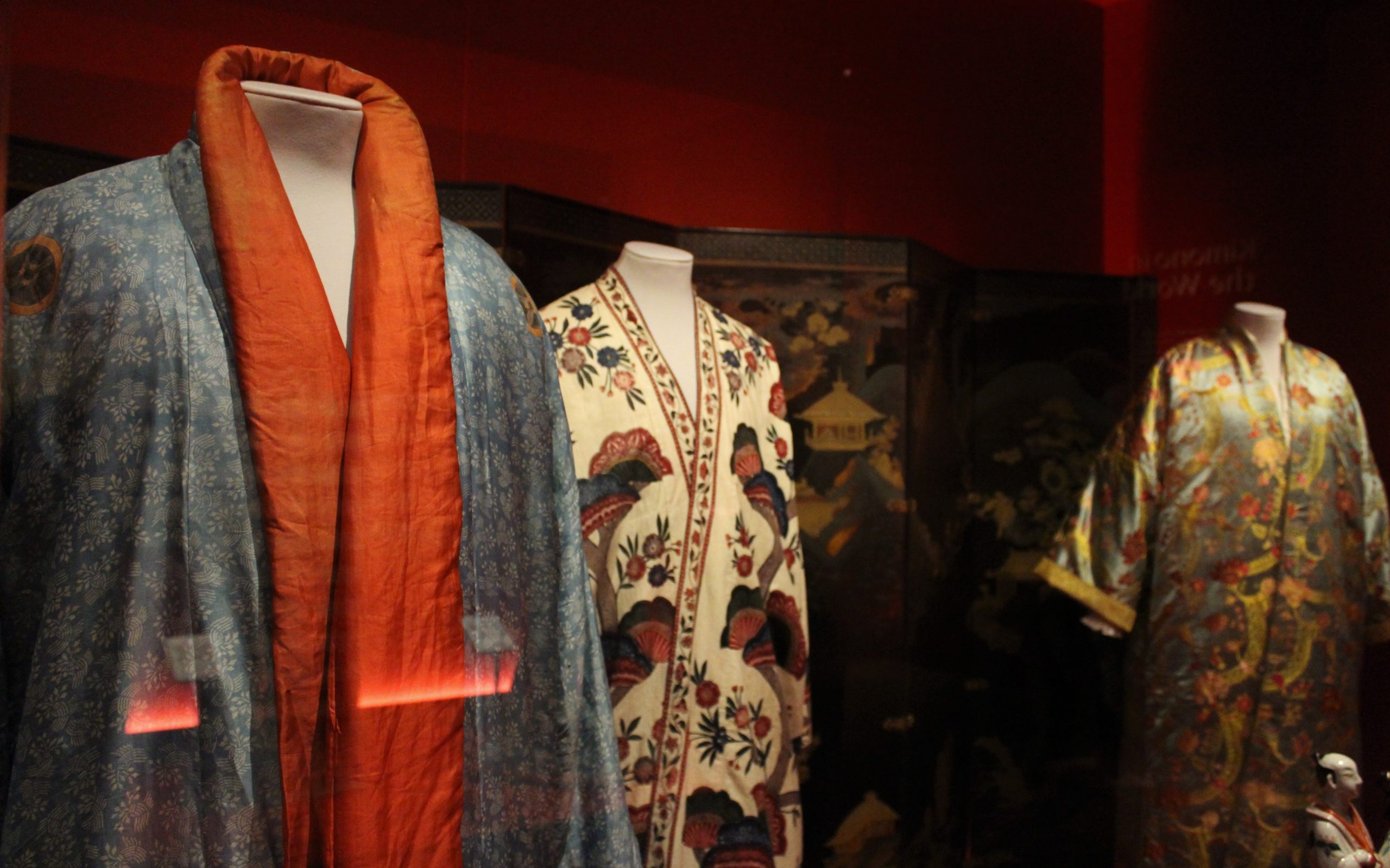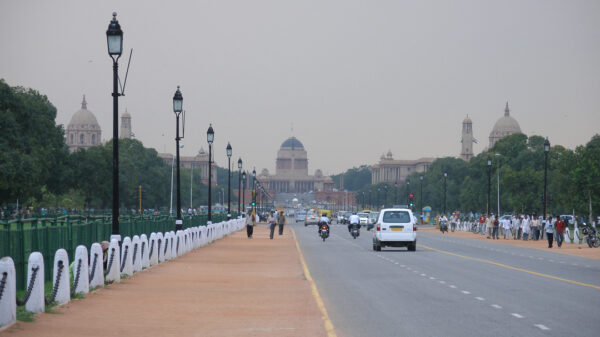Roar writers Camilla Alcini and Aurora Sosveen review the Victoria and Albert exhibition, Kimono: From Kyoto to Catwalk.
Visiting a museum at the time of corona is bound to be interesting in itself, with pre-booking, limited numbers of people and, of course, face masks. Yet this strange time was quickly forgotten when we entered the exhibition. Being in a museum for the first time in months already felt magical, and soon we traveled to the other side of the world, to the Pacific island of Japan.
Following an illuminated hallway, we entered a room displaying the very local beginnings of the kimono garment, the protagonist of this exhibition. We learned about the complexity and ceremonial aspects of kimonos, with its intricate fabric weavings, countless layering, and how it became a bold fashion statement in the streets of Kyoto. Simultaneously, the kimono was the everyday garment of Japan, thus encompassing all kinds of people and classes as a national binding traditional force. The colour, pattern and technique indicated the status and taste of the owner, while the surface remained traditionally flat, thus showing the Japanese disregard of body shapes.
The first rooms of the exhibition have a low ceiling, a somewhat dark interior and beautifully painted screen boards, all contributing to a feeling of walking into the set of an Akira Kurosawa film. This manifests Japan’s Edo period (1615-1868), in which the country was more or less closed off from the world. This isolation brought unprecedented political stability, economic growth and urban expansion. Osaka’s commercial character was fused with the manufacture tradition of Kyoto and soon shifted to the city, which by the end of the century was the largest in the world: Edo (modern-day Tokyo). This fusion of style became known as ukiyo, “the floating world.†Fashion soon became a major economic and social force in Edo, Japan. The high demand for the latest styles easily met the desire of the artisans to satisfy it, giving life to an extraordinarily active, sumptuous and luxurious market. Designers, weavers, dyers and embroiderers were all at the service of people’s changing tastes.
When Japan finally opened its borders, “Japonisme†became a raging phenomenon across the world, sparking an interest in all things Japanese. Above all, the kimono was imported and appropriated in Europe, blending kimono-inspired patterns and fabrics with corsets and excessive padding. The exhibition at the V&A features some incredible pieces to illustrate this, such as John Galliano’s for Dior 2007. Vogue America declared, in October 1924, that it was “superfluous to insist upon the importance of Japanese influence on western fashion,†given the influence of kimono, Japanese embroideries, and obi replicas (Obi is the Kimono’s brocade belt, a key element in the luxury of the whole garment. Unfortunately, only a small number survived the time, as they were easily damaged by frequent use). However, this cultural exchange was mutual, and in a mirrored room of the exhibition abstract and geometrical patterns, inspired by European culture, can be admired. The cultural exchange became a symbol of modernity both in Europe and Japan.
Finally, we entered a brightly lit, open space that synthesised the former periods. Here, we saw the kimono as a global and timeless phenomenon, a symbol of modern globalisation. The room is shaped like a Zen-garden with white podiums symbolising rocks and sand in contrasting colours, manifesting both the open space for reinterpretation, in addition to the constant flow and evolution of the garment. Here we found magnificent traditional kimonos, including bridal wear, and modern reinterpretations both by Japanese and Western designers. Some examples of kimonos in pop-culture are displayed here: Obi-Wan Kenobi’s costume from Episode IV, as well as kimonos worn on stage by Madonna, Freddie Mercury, and Björk. Several quotes by various designers support the idea that a kimono is something one must wear and reinterpret to one’s own need and style, and not a relic. Yamamoto’s jacket with kimono sleeves is a perfect example, which we saw in this last room. The encounter with popular global culture created a newfound freedom within the traditional, which helped rejuvenate the interest in Japan after a lasting decline.
And with this, we reached the end of an exquisite journey showing us the peculiar history of a garment that started out behind the closed walls of Japan and has now made its way into almost every home.
The exhibition provides visitors with a much needed escape from the current events. Having a dedicated space for a single activity seems like a luxury when most social interactions take place in the same room, or in front of a screen. Our faces may have been covered, but one could still see the relief and joy in people’s eyes from doing something different. Kimono, together with the wonderful exhibitions that London has to offer, shows once again how tradition became part of our globalised culture. The more we are a part of a cosmopolitan interconnected world, the more traditions are meant to become embedded in pop culture, and the more we will discover ourselves in the beautiful puzzle of diversity.






































































